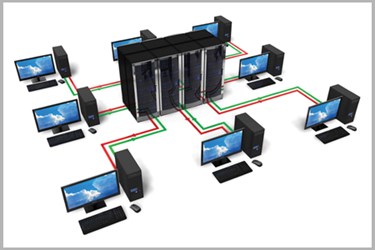The Network Is Your Headphone Cord

By Alex Henthorne-Iwane, Vice President of Marketing, Kentik
Music is rapidly completing its astonishing transformation from a physical thing you have and hold to an ephemeral service experience. Streaming music revenue increased 45 percent in 2015 and now makes up nearly half of the world’s digital music revenue, according to the International Federation of the Phonographic Industry’s annual report.
We have reached a turning point in which streaming music outweighs the revenue from the sale of physical products such as CDs for the first time. The move to streaming music by tens of millions of paying subscribers comes on top of the nearly billion-strong audience using advertising-based platforms like YouTube to listen to streaming music for free.
Through most of its history, recorded music has been synonymous with the physical thing that contained the recording: reel-to-reel tapes, LP records, 8-track tapes, cassettes, and CDs. MP3s were the digital transitory phase, where media players took the dual role of portable file storage and audio player. Now, from a music point of view, the smartphone or streaming media player is essentially just a network-connected audio converter.
The reality of streaming is also transforming the way music service providers have to deal with the physical realities of getting music in the form of bits to listeners, who expect a seamless experience.
Breaking Streaming Media Into Distributed Components
To better understand what’s happening, we can think of this transformation as the disaggregation of the MP3 player into distributed components. The file storage and player has been distributed to servers living in hyper-connected datacenters. The headset cord has been stretched to include a long digital segment (internet connectivity from the datacenter to the user device), a bump in the wire for digital to analog conversion (the smartphone or media player), then possibly a short, local segment via an actual physical cord or Bluetooth if needed, from a portable device to the earphones.
If we consider that analogy, the most vulnerable part of this whole arrangement is the internet connectivity. To deal with that challenge, music service providers are going beyond using public cloud hosting for their files. They have been constructing industrial-strength versions of the public internet to ensure the digital segment of the “headphone cord” is as good as it can get.
The technical term for what music service providers are building is a Content Delivery Network (CDN). In other words, they are building private versions of the type of service that commercial providers like Akamai, CloudFlare, and others are offering on a fee basis.
Enterprises use commercial CDNs to ensure the performance and resilience of their e-commerce websites to different audiences around the world. Private CDNs built by the likes of Pandora and Spotify are dedicated and tuned to their particular service requirements, ensuring that they get music files as close to their major audiences as possible. They also ensure that the connectivity from those files to the mobile and retail broadband networks that connect smartphones and other music players is as robust as possible.
Big Infrastructure, Big Data Visibility
With great power in the form of costly investments in private CDN infrastructure and connectivity comes great responsibility. The goal is to make sure the music bits flow freely, so revenue flows freely. To do this, music providers are also investing in heavy duty network traffic analytics based on cutting-edge big data technologies.
Big Data network traffic analytics capabilities allow them to examine billions of management data records generated by their network and server infrastructure in full detail, and answer ad-hoc questions about the flow of traffic in seconds. Questions include:
- How effectively is the traffic flowing over the Internet via multiple ISPs to our audience?
- How can we optimize the cost performance of that traffic flow?
- Is that big bump of anomalous traffic due to new demand, a misconfiguration in our network, or a distributed denial of service (DDoS) attack?
Answering those questions rapidly was not possible with first-generation approaches like Hadoop MapReduce. Today, new columnar-store databases, flash storage, containerized micro-services, and bare metal computing clusters are making the ingestion of billions of network data records and immediate analytics a reality. In this way, operations engineers at music service, video, gaming and other streaming providers can make quick decisions within their tight operational timeframes.
If Internet traffic is mission critical for your organization to serve ads, transactions, or content, then investing in big data that delivers insight at operational speeds may be well worth your attention sooner rather than later. After all, you don’t want your business to go the way of 8-track tapes.
